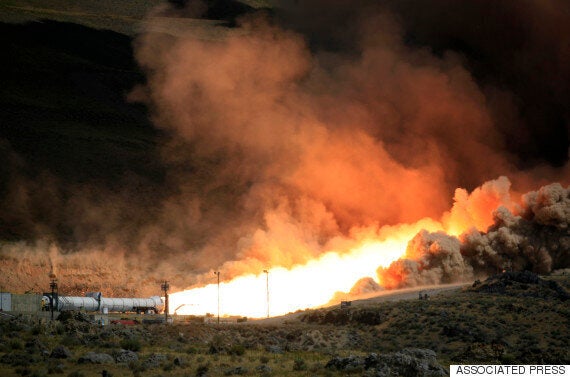Travelling to Mars is incredibly difficult, for starters you have to contend with the distance (a cool 225,300,000 km), and then of course there's all the other factors such as the fact you're in a giant floating metal can being blasted with solar radiation.
That's not all, oh no. If you can find a way to protect yourself against the radiation you'll then have to spend most of your time exercising because your muscles will simply give up on you thanks to lack of gravity.

Oh and then finally there's the simple fact that you're going to be stuck in a room no bigger than a shed with other people for what would almost certainly be eight very long months.
Sound unpleasant? It is, which is why NASA and independent companies are doing everything in their power to either a) make the journey less fatal or b) shorten the whole thing and make it just about bearable.
Well one such approach is a revolutionary new propulsion system that would cut that journey down to just four months.
Harnessing The Power Of The Sun
That solution is the Fusion Driven rocket. That's right, the elusive power source that could solve the energy crisis and finally give us the kick in the shins we need to stop polluting the planet.

Rather than building a nuclear fusion reactor and then converting that into electricity the FDR uses small managed reactions that are created using a solid lithium fuel in the form of fired magnetic coils.
The coils are fired towards superheated plasma. As they surround the plasma it's compressed into a fusion state, the resulting ionised coils are fired out the back of the nozzle giving the spacecraft its thrust.
The joy of the whole system is that it's relatively cheap and because the reactions all occur without ever touching the spacecraft it causes little to no wear and tear to the propulsion system or the rest of the craft.
Helping make this technology a reality is MSNW, an energy research company that believes it can finally turn fusion propulsion into a reality.
The 'Atom Bomb' Thruster
This isn't the first time that nuclear energy has been considered as an alternative to conventional rockets. In the past NASA had even considered using controlled fission explosions (nuclear bombs) to try and propel the craft.

The problem with this was scalability. There was no way to make the explosions small enough that they wouldn't utterly vaporise the spacecraft from acceleration.
It was later worked out that to even have a hope of making it work the spacecraft would need to have the equivalent mass of 100 aircraft carriers.
As fusion power became more and more of a viable option it was then calculated that to even have a hope of sending the smallest possible fusion reactor into space the craft would need to have a mass of 4000 metric tonnes, not ideal when NASA was looking at an optimal launch weight of just 200.
READ MORE:
When Are We Going?
Recent developments in the creation of small-scale nucelar fusion reactors might offer us a glimmer of hope at using an entire reactor.
Until that point though the Fusion Driven rocket is our best shot. Both NASA and MSNW are hard at work trying to make it viable but until they can perfect the system on the ground it seems more and more likely that the first few astronauts heading to Mars are going to need to sharpen up on their Poker because it's going to be a long, long journey.